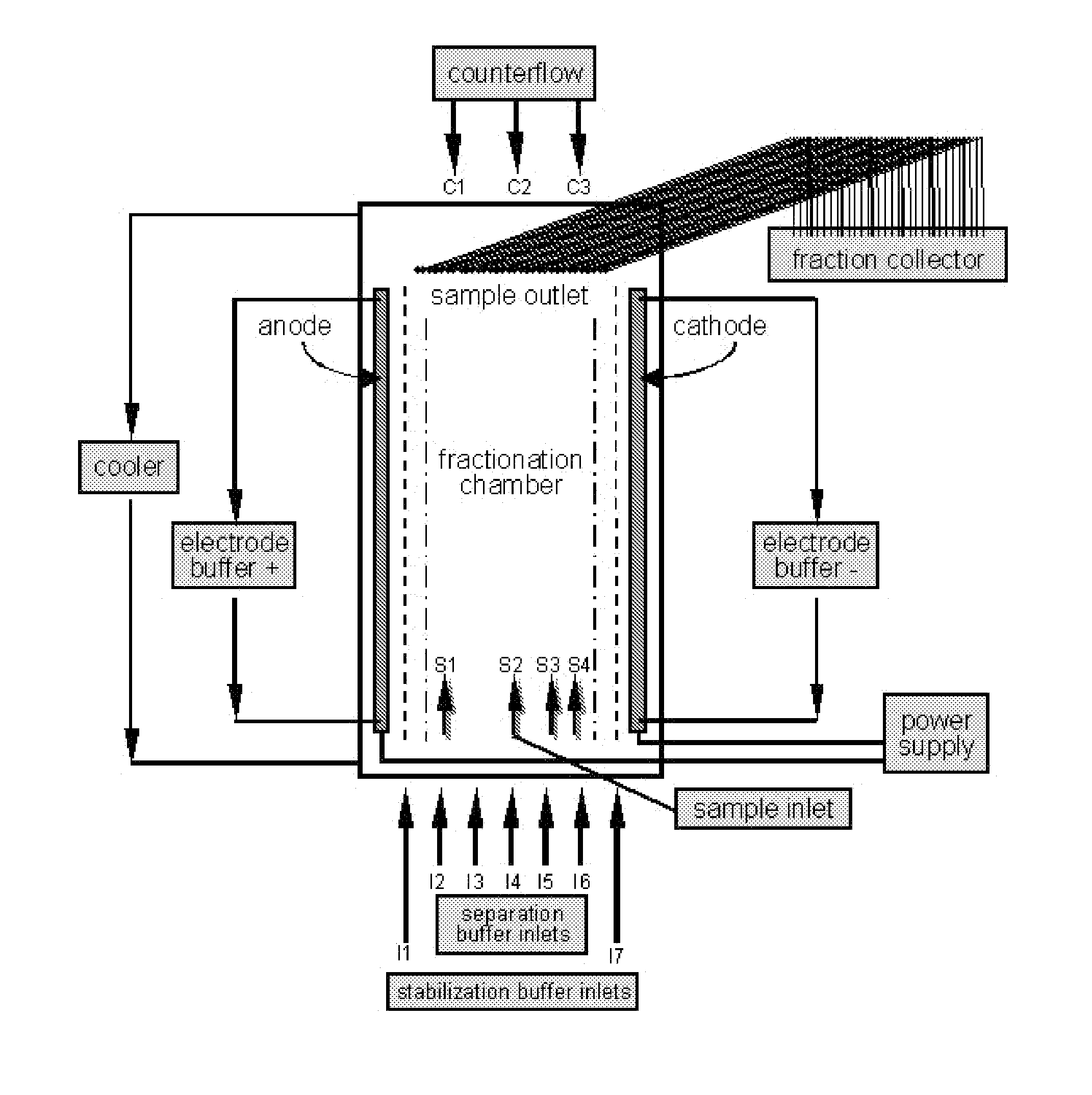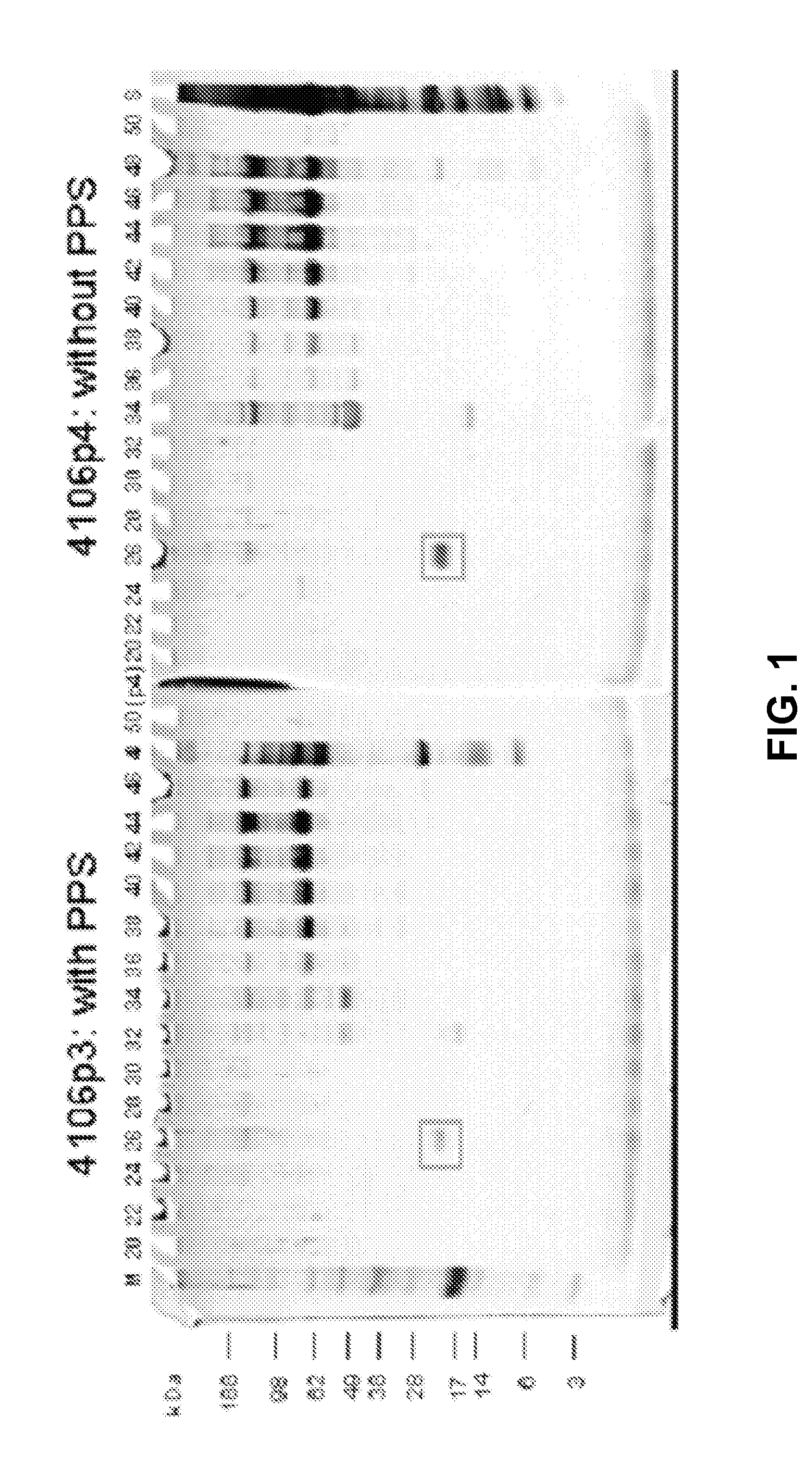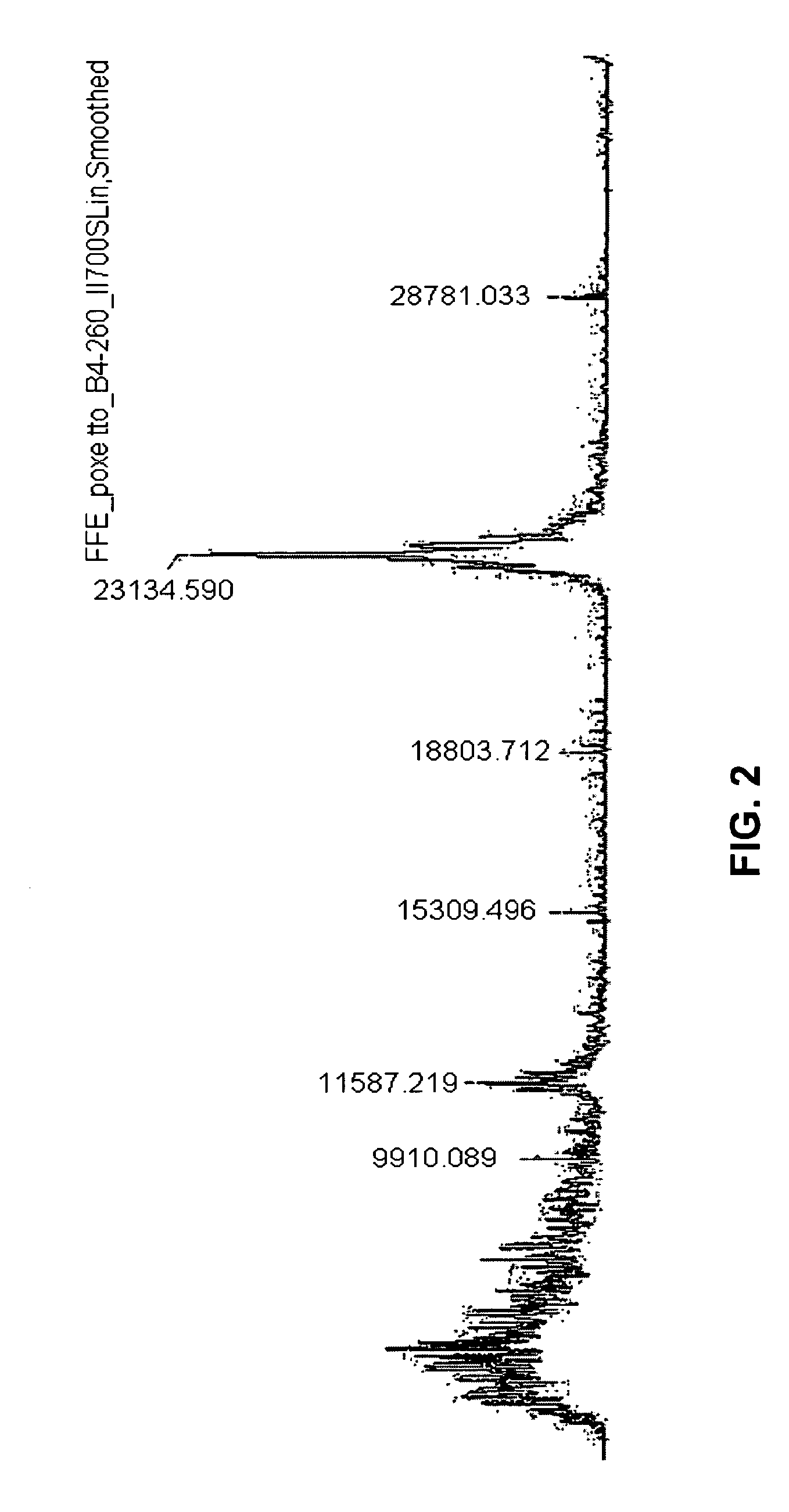Ms-compatible nonionic or zwitterionic surfactants in free-flow electrophoresis
a nonionic or zwitterionic surfactant, free-flow electrophoresis technology, applied in electrodialysis, optical radiation measurement, particle separator tubes, etc., can solve the problem of increasing the overall length of time for analysis, not preventing the use of existing methods (or the combination of several existing technologies), and loss of samples
- Summary
- Abstract
- Description
- Claims
- Application Information
AI Technical Summary
Benefits of technology
Problems solved by technology
Method used
Image
Examples
example 1
Separation of Serum from Python Sebae with and without PPS
[0195]Serum was taken from python sebae. The serum sample was diluted 1:10 in the separation medium. The separation medium contained only buffer components that are well known to be compatible with MALDI-TOF. In addition, one experiment was performed using PPS, a MALDI-TOF compatible cleavable surfactant, to the sample as well as the separation medium.
[0196]The separation of the sample was carried out on a BD™ Free-flow Electrophoresis System in free-flow isoelectric focusing (FF-IEF) mode. The apparatus was set up comprising nine media inlets (E1-E9) and four sample inlets (S1-S4). Anodic stabilizing medium was introduced into inlet E1. The cathodic stabilizing medium was introduced into inlet E9 and the sample was introduced via sample inlet S2. The voltage applied was 550 V and the current was 105 mA. The sample and the media were introduced at a flow rate of 2 ml / h and 150 ml / h, respectively.
[0197]Separation and stabilizi...
example 2
Separation of Peptides Generated from HELA Cells with and without PPS
[0205]To confirm the suitability of zwitterionic surfactants such as PPS for FFE, the separation profile of samples (and FFE methods) containing PPS were compared with the separation profile of samples (and FFE methods) without PPS. In one example, two samples of 108 HeLa cells each were sonicated in HBS buffer (10 mM HEPES pH 7.9, 1.5 mM MgCl2, 10 mM KCl+protease inhibitors complete mini tablet (1 tablet for 10 ml; Roche #11836153001)). Soluble proteins were separated from insoluble cell fragments such as membranes and membrane proteins by ultracentrifugation.
[0206]100 mM ammonium bicarbonate buffer were added to the supernatant (soluble proteins 3 mg / ml) and TCEP (Tris(2-carboxyethyl)phosphine hydrochloride) to a final concentration of 5 mM was added (incubation for 60 min), then IAA (iodoacetamide) was added to a final concentration of 15 mM (incubation 60 min). Trypsin (modified, sequencing grade, Promega) was ...
example 3
Separation and Identification of Membrane Proteins from HELA Cells using PPS
[0224]In a first step, samples of a total cell extraction and of a membrane protein extraction in the presence of PPS were prepared.
[0225]To prepare a sample of a total cell extract (solution comprising soluble proteins and membrane proteins), 108 HeLa cells were sonicated in 1.5 ml HBS-buffer+4% PPS (3-3[-(1,1-bisalkyloxyethyl)pyridine-1-yl]propane-1-sulfonate)+1 μl benzonase. The sample was centrifuged (6000 g) and the supernatant was recovered for FFE separation.
[0226]To prepare a sample of a membrane protein extraction, 108 HeLa cells were sonicated in 1.5 ml HBS-buffer+1 μl benzonase and centrifuged (6000g). The supernatant was collected and additional 1.5 ml HBS-buffer was added to the pellet that was sonicated and centrifuged at 600 g. The supernatants were combined and ultracentrifuged (125000 g). The pellet was resuspended in Na2CO3-buffer (final protein concentration 1 mg / ml), incubated on ice for ...
PUM
| Property | Measurement | Unit |
|---|---|---|
| Fraction | aaaaa | aaaaa |
| Fraction | aaaaa | aaaaa |
| Concentration | aaaaa | aaaaa |
Abstract
Description
Claims
Application Information
 Login to View More
Login to View More - R&D
- Intellectual Property
- Life Sciences
- Materials
- Tech Scout
- Unparalleled Data Quality
- Higher Quality Content
- 60% Fewer Hallucinations
Browse by: Latest US Patents, China's latest patents, Technical Efficacy Thesaurus, Application Domain, Technology Topic, Popular Technical Reports.
© 2025 PatSnap. All rights reserved.Legal|Privacy policy|Modern Slavery Act Transparency Statement|Sitemap|About US| Contact US: help@patsnap.com



